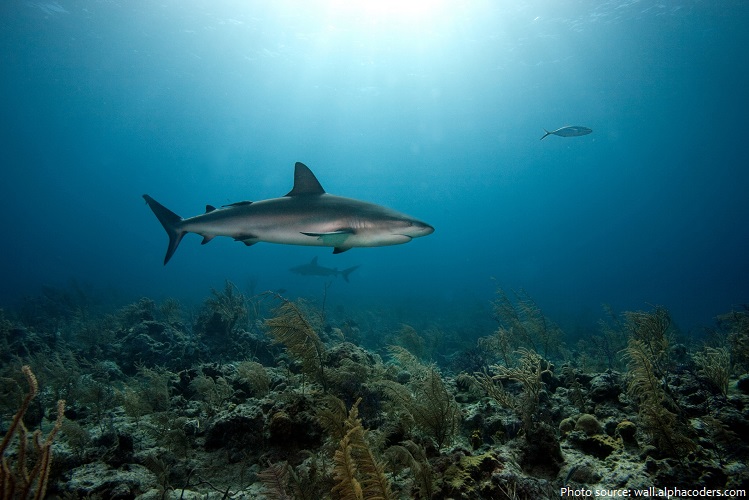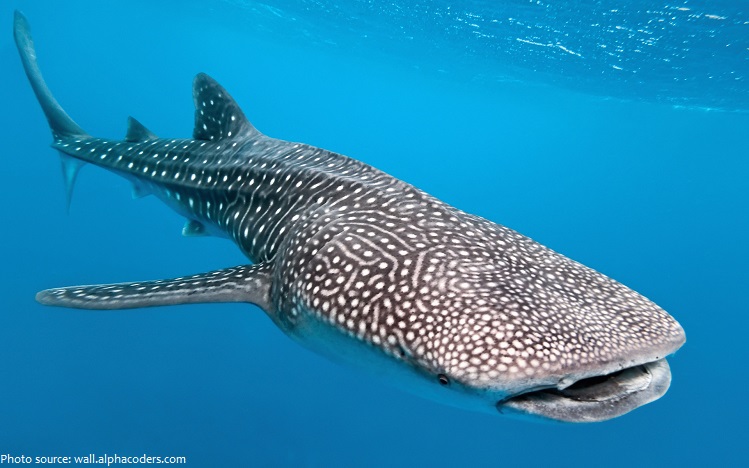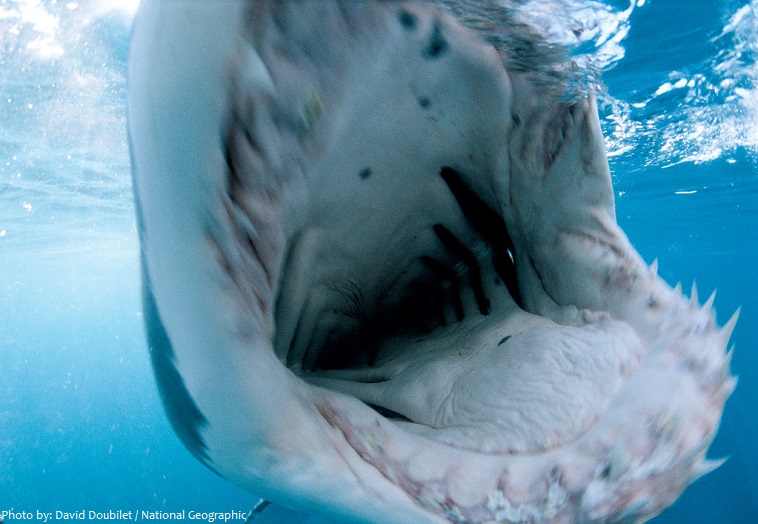Sharks are a group of fish characterized by a cartilaginous skeleton, five to seven gill slits on the sides of the head, and pectoral fins that are not fused to the head.
There are more than 470 species of sharks.
Sharks can be found in all five of the Earth‘s oceans. While some species inhabit shallow, coastal regions, others live in deep waters, on the ocean floor and in the open ocean. Some species, like the bull shark, are even known to swim in salt, fresh and brackish waters.
Sharks have prowled Earth’s seas, essentially unchanged, for 400 million years.
The majority of shark species live 20 to 30 years in the wild, there are some species that live much longer than others. For example, the Greenland shark has the longest lifespan at about 400 years, while the blue shark in the wild has an average lifespan of 15-16 years.
They range in size from the small dwarf lanternshark (Etmopterus perryi), a deep sea species of only 17 centimeters (6.7 inches) in length, to the whale shark (Rhincodon typus) [photo below], the largest fish in the world, which reaches approximately 12 meters (40 feet) in length.
Most sharks are “cold-blooded“, meaning that their internal body temperature matches that of their ambient environment.
Sharks belong to a family of fish that have skeletons made of cartilage, a tissue more flexible and lighter than bone.
Like other fish, sharks extract oxygen from seawater as it passes over their gills. Unlike other fish, shark gill slits are not covered, but lie in a row behind the head.
All sharks have multiple rows of teeth, and while they lose teeth on a regular basis, new teeth continue to grow in and replace those they lose.
Sharks have a covering of placoid scales that protects their skin from damage and parasites in addition to improving their fluid dynamics.
Tails provide thrust, making speed and acceleration dependent on tail shape.
Sharks have all the senses we have (smell, taste, touch, eyesight, and hearing). They can also sense electricity and vibrations in the water.
A shark’s primary sense is a keen sense of smell. Its paired nostrils are on the underside of its snout. Water continually flows through the nostrils, giving the shark olfactory information. Unlike humans, shark nostrils have nothing to do with breathing – they are not even connected to the mouth.
Although the threshold of a shark’s visual acuity has not been demonstrated, it is apparent that they are well-suited for seeing in dim light. Their eyes are particularly sensitive to moving objects.
Although it is hard to test the hearing of sharks, they may have a sharp sense of hearing and can possibly hear prey from many miles away. Sharks have only an inner ear, which consists of three chambers and an ear stone called an otolith. A shark’s inner ear detects sound, acceleration, and gravity.
The ampullae of Lorenzini are the electroreceptor organs. They number in the hundreds to thousands. Sharks use the ampullae of Lorenzini to detect the electromagnetic fields that all living things produce. This helps sharks (particularly the hammerhead shark) find prey. Also ocean currents moving in the magnetic field of the Earth also generate electric fields that sharks can use for orientation and possibly navigation. The shark has the greatest electrical sensitivity of any animal. [Photo :Pores with ampullae of Lorenzini in snout of Tiger shark]
Sharks are opportunistic feeders, but most sharks primarily feed on smaller fish and invertebrates. Some of the larger shark species prey on seals, sea lions, and other marine mammals. Sharks have been known to attack humans when they are confused or curious.
Sharks may be social or solitary animals living on their own, depending on the species. Since they are equipped with teeth at birth, they do not need to rely on each other for survival.
Sharks traveling in groups are most common during mating season and periods of migration, though some species also tend to hunt together in groups.
Most sharks give birth to live young, but some release eggs that hatch later. The gestation period can be up to almost two years long.
Sharks can have from 1 to 100 babies at a time, depending on the species of shark. Species of sharks that give birth to live sharks only have a few at a time.
Sharks do not care for their babies after they are born, but they do search for a safe place where they can lay their eggs or give birth.
Some captive female sharks have been known to reproduce without the aid of a male, essentially cloning themselves.
Oxygen-rich water flows through the gills during movement allowing the shark to breathe. While some species of sharks do need to swim constantly, this is not true for all sharks. Some sharks such as the nurse shark have spiracles that force water across their gills allowing for stationary rest.
In general, sharks swim (“cruise”) at an average speed of 8 kilometers (5 miles) per hour, but when feeding or attacking, the average shark can reach speeds upwards of 19 kilometers (12 miles) per hour. The shortfin mako shark, the fastest shark and one of the fastest fish, can burst at speeds up to 50 kilometers (31 miles) per hour.
Sharks are common down to depths of 2,000 meters (7,000 feet), and some live even deeper, but they are almost entirely absent below 3,000 meters (10,000 feet).
Contrary to popular belief, only a few sharks are dangerous to humans. Out of more than 470 species, only four have been involved in a significant number of fatal, unprovoked attacks on humans: the great white, oceanic whitetip [photo below], tiger, and bull sharks.
Year 2015 set a new record for shark attacks around the world, with 98 incidents, including six human fatalities.
It is estimated that 100 million sharks are killed by people every year, due to commercial and recreational fishing.
In 2009, the International Union for Conservation of Nature IUCN Red List of Endangered Species named 64 as being at risk of extinction due to fishing and shark finning.
Until the 16th century, sharks were known to mariners as “sea dogs“. The etymology of the word “shark” is uncertain.
The outside of shark teeth is made up of fluoride, the active component of most toothpaste, so Sharks never get cavities.
About 50 different shark species glow in the dark; bioluminescence making them glow in the dark.
Sharks have survived 5 mass extinctions.
Even before dinosaurs roamed the Earth, sharks hunted through the oceans!










Comments are closed.